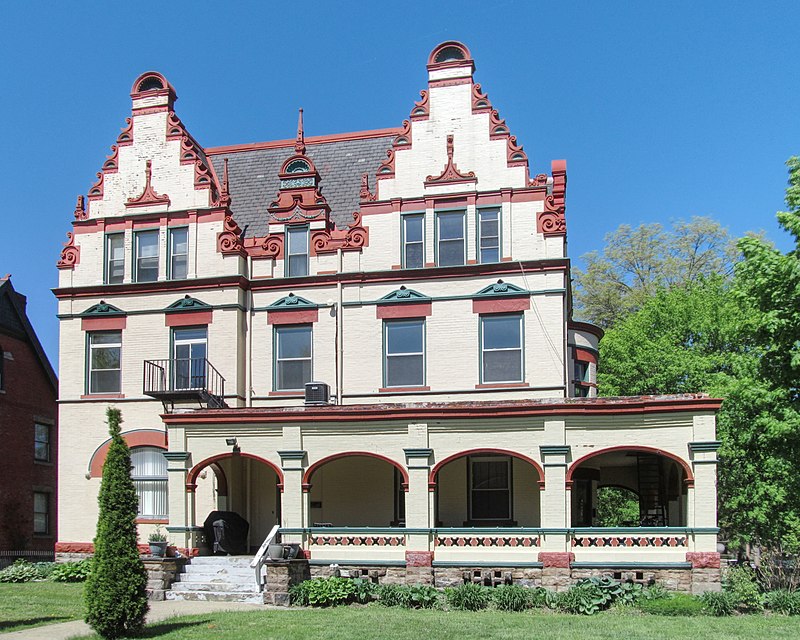
Urban legend says that these structures are chapels where the privileged can repent of their sins, but in fact they house the elevator mechanics and other rooftop necessities.
Comments

Urban legend says that these structures are chapels where the privileged can repent of their sins, but in fact they house the elevator mechanics and other rooftop necessities.

Perhaps the best way to describe the architect Frederick Sauer is to say that he was a high-functioning mad genius. He produced some very respectable church designs—St. Stephen Proto-Martyr, St. Stanislaus Kostka, and St. Mary of the Mount, to name three. Meanwhile, he went home every evening and started pulling rocks out of his back woods and piling them up into whimsical buildings with his own hands.
When he designed a private residence, Sauer sometimes pushed the limits of current styles. Here is a big stony house built from his design in 1893. It hits some of the fashionable Romanesque notes, but that immense crowstepped Flemish gable makes a big impression on the neighbors. (The high-pitched roof and big gables also give the house a roomy third floor.)




This row of houses on Howe Street has a distinctly Dutch or Flemish look. The Flemish style is not unknown in Pittsburgh, but it is rare to see a row of five houses in that style at once. (For another example of multiple Flemish houses, see the Osterling row in Brighton Heights.)

This house, like many in Shadyside, has had part of its basement turned into a garage, with a steep driveway dug out of the front yard.

It is delightful to see that the intricate woodwork on the front porch has been preserved.


The angles and curves that make the gable look so Antverpian are made of iron or steel, as we can tell by one rusted section:

This makes us suspect that perhaps three of the other houses in the row might have had similar decorations, removed when they rusted too much to repair.



This house, however, was clearly meant to show off its stones without additional adornment, except for the usual decorative utility-cable swags.

Flemish Renaissance is not the most common style in Pittsburgh; this is certainly one of our most splendid examples of it. It is one of the surviving millionaires’ mansions on Highland Avenue. Father Pitt’s identification of it as the Elliott–Fownes house is based on two sources. The application for the neighborhood’s historic-district designation in the National Register of Historic Places mentions it as the home of “machine politician Robert Elliott”; a 1912 book has Henry C. Fownes, founder of the Oakmont Country Club, at this address.

